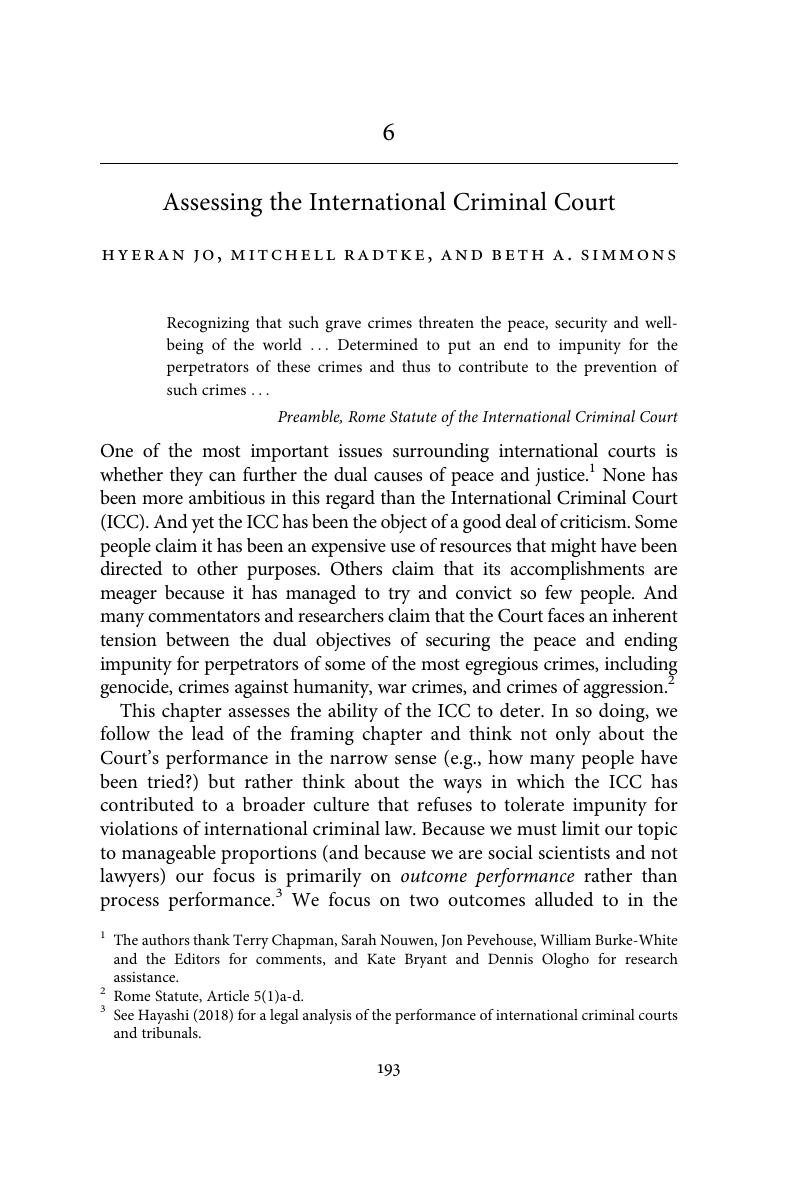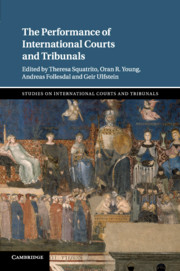Book contents
- The Performance of International Courts and Tribunals
- Studies on International Courts and Tribunals
- The Performance of International Courts and Tribunals
- Copyright page
- Contents
- Figures
- Tables
- Maps
- Contributors
- Acknowledgments
- Abbreviations
- Introduction
- Part I
- Part II
- 6 Assessing the International Criminal Court
- 7 How the Fragmentation of the International Judiciary Affects the Performance of International Judicial Bodies
- 8 International Judicial Performances and the Performance of International Courts
- 9 International Courts’ Socialization Strategies for Actual and Perceived Performance
- 10 What Happens after a Judgment is Given? Judgment Compliance and the Performance of International Courts and Tribunals
- 11 Problem-Solving Structure and International Courts and Tribunals: Lessons from the Study of International Regimes
- Part III
- Index
- References
6 - Assessing the International Criminal Court
from Part II
Published online by Cambridge University Press: 29 March 2018
- The Performance of International Courts and Tribunals
- Studies on International Courts and Tribunals
- The Performance of International Courts and Tribunals
- Copyright page
- Contents
- Figures
- Tables
- Maps
- Contributors
- Acknowledgments
- Abbreviations
- Introduction
- Part I
- Part II
- 6 Assessing the International Criminal Court
- 7 How the Fragmentation of the International Judiciary Affects the Performance of International Judicial Bodies
- 8 International Judicial Performances and the Performance of International Courts
- 9 International Courts’ Socialization Strategies for Actual and Perceived Performance
- 10 What Happens after a Judgment is Given? Judgment Compliance and the Performance of International Courts and Tribunals
- 11 Problem-Solving Structure and International Courts and Tribunals: Lessons from the Study of International Regimes
- Part III
- Index
- References
Summary

- Type
- Chapter
- Information
- The Performance of International Courts and Tribunals , pp. 193 - 233Publisher: Cambridge University PressPrint publication year: 2018
References
- 1
- Cited by



